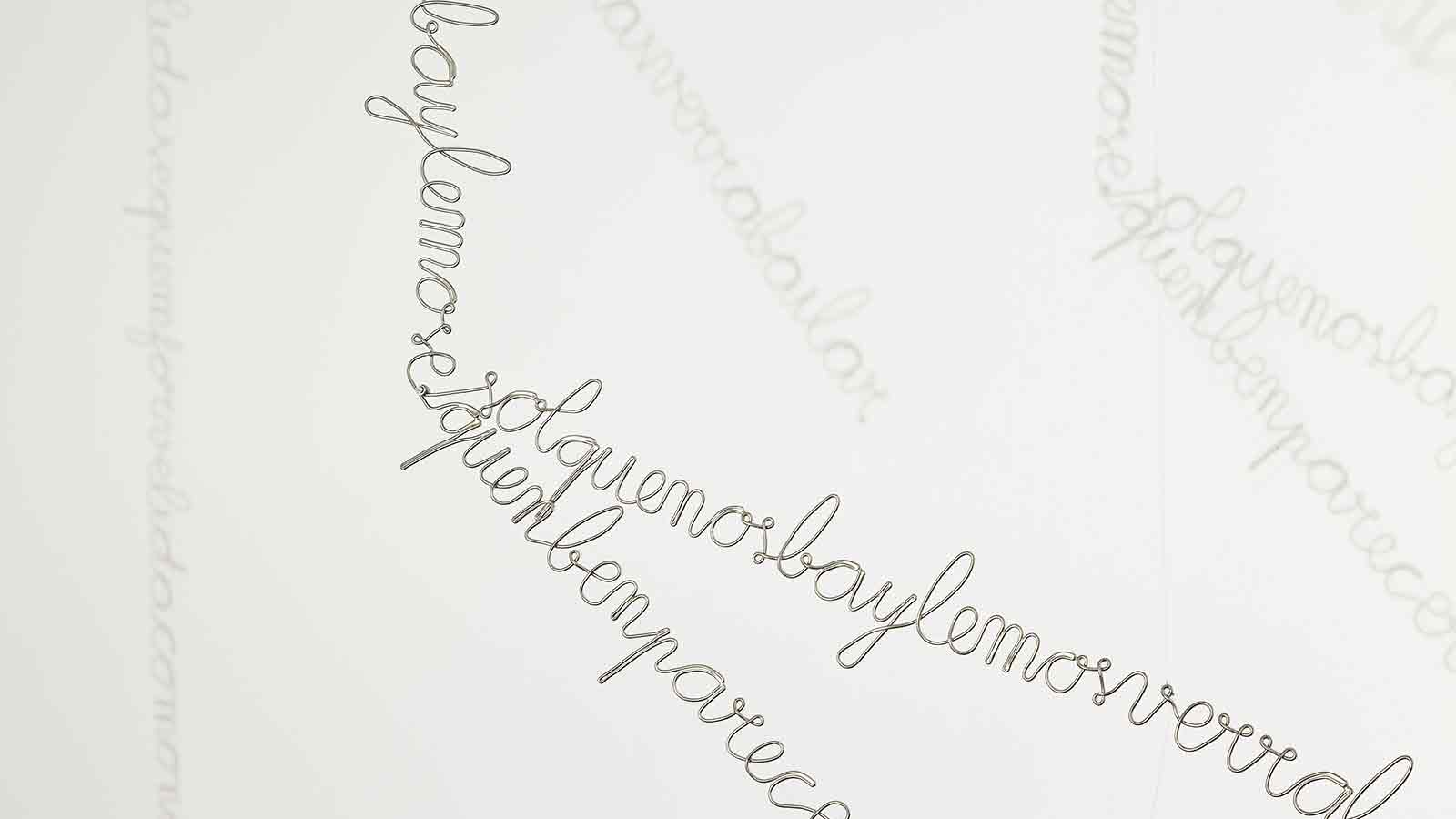“Pelo caminho um ramo de paisagens para Carlos Nogueira”
One of the fondest childhood memories of Salette Tavares (1922-1994) was, as she wrote in the autobiographical text of the catalogue of the exhibition Brincar (Play) – held at the Galeria Quadrum in 1979 – that of her two gardens: the one she had at school, where “they gave her a piece of soil and the other one at home, where I asked for it”, in which she buried “with her fingers the seeds” of the plants she sowed there.
In addition to this happy memory, Salette never ceased to consider gardens and the elements of nature as decisive components in the creative development of children, as she stated in the same text: “We must not separate children from gardens and not let them die atrophied by the toy shops which, like all shops in today’s civilization, with their monstrous window displays, eat up the childhoods of children, parents and grandparents”.
As for her two kindergartens, they were in the city on the Indian Ocean, now called Maputo, where Salette Tavares was born in 1922 and where she lived with her family until she was ten years old.
This ludic dimension associated with childhood was continuously present in all the works that Salette Tavares produced and was always assumed by her without complexes. “Playing is the creativity of childhood that we carry throughout our lives, if we know how”, she wrote in 1975. The pleasure of playing and, above all, playing with words started early, in her games as a girl: “With few toys, everything was a toy, leaves, fruit, grasshoppers, earth, tin, and even nothing. And this nothingness is very important. All that was needed was the word that became an object. It was as easy to play with it as it was to play with a ball”, she revealed in the mentioned text from 1979. The word was to be “the most beautiful thing” in her life and the use she made of it made Salette Tavares one of the most prominent figures of the so-called Experimental Poetry Movement, a new form of poetic expression with an avant-garde character which developed and affirmed itself abroad, and among us, between the 1950s and the 1970.
In Portugal, in the context of repression at the time, this movement, in addition to its character of contestation of the literary milieu, also had a side of political contestation against the regime that was, in fact, shared in the scope of the plastic arts and performing arts. Apart from Salette Tavres, the protagonists of the Experimental Poetry Movement were Ernesto de Melo e Castro, António Aragão and Ana Hatherly who, during those years, produced visual texts, organized and participated in the first happenings.
Until 1994, the year she passed away, her solid philosophical and aesthetic training also led Salette Tavares to develop a prolific activity as a critic of plastic arts in several publications, having been president of the Portuguese section of the International Association of Art Critics (1974-1977). Of her pedagogical activity, her passage as a teacher of Aesthetics at the then recently created Ar.Co (Centre of Art and Visual Communication), where she carried out the happening Sou Toura Petra, stands out. Her published poetic work includes Espelho cego (1957), Concerto em Mi Maior para Clarinete (1961), Quadrada (1967) 14 563 Letras de Pedro Sete (1967) and Lex icon (1971), the latter with the preface by Gillo Dorlfes in the Italian edition.
Pelo caminho um ramo de paisagens para Carlos Nogueira is a hand-written text in poetic prose, written in black ink ball-point pen, with a clear and well-drawn calligraphy, on a fragile and transparent sheet of tracing paper, signed and dated November 1983. The text has a strong biographical charge, relating a dramatic event of the family life of Salette Tavares; perhaps because of that, it presents some erasures and amended words, as if it was a draft. Despite the dramatic nature of the event related – her son’s serious car accident – there is a kind of irony and a certain nonsense in the text. As in other of her poetic works, one also finds here a concern with spatiality in the organization of the body of the text, through the graphic use of the blank spaces on the page, thus creating not only a visual rhythm, but also a reading rhythm.
Dedicated to the artist Carlos Nogueira (b. 1947), this work was Salette Tavares’ “reply landscape” to one of the postcards that the artist recreated, creatively modifying them, calling them “landscapes to send”, and that he sent to some of his friends. The “landscape to send” that Carlos Nogueira sent to Salette was a postcard of Fatima where, in the middle of a set of dark umbrellas, a yellow umbrella stood out to the eye. In her “response landscape”, Salette Tavares talks about her inability to sunbathe and about her umbrellas: the one “with thirteen years of use was a rag saved by some mended rods”, the “bright yellow umbrella – my enigma umbrella, where the sun sees itself in a mirror”, offered by the Italian translator of Lex icon, another “Chinese, which serves very well in my house in Lisbon”.
This work, which was donated by Carlos Nogueira to the Art Library in 2014, was part of the exhibition on Salette Tavares that the Centro de Arte Moderna presented between October 7, 2014, and January 25, 2015.

Works from the Library
A selection of books and magazines, photographs, exhibition catalogues and other documents whose themes relate to the history of art, modern and contemporary visual arts, Portuguese architecture, photography and design.

